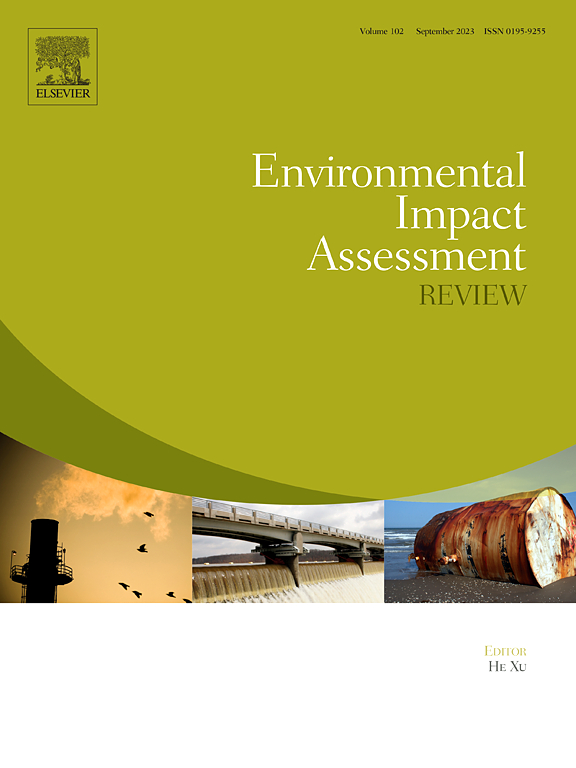长江三角洲货运结构调整对碳排放的影响:一个危机解决模型
IF 9.8
1区 社会学
Q1 ENVIRONMENTAL STUDIES
引用次数: 0
摘要
长三角地区是中国高质量社会经济发展的一个缩影,交通运输和碳减排问题的影响尤为突出。考虑到货运繁荣与碳排放危机之间的复杂关系,本研究采用双目标优化(BOP)和物流混沌映射(LCM)相结合的危机解决模型,评估货运结构调整对长三角地区碳减排的影响。动态危机解决度(CRD)指标评价了不同导向下的碳排放危机解决方案。结果表明,LCM提高了模型的适应性,符合实际运输动态。运费调整与碳排放呈非线性相互作用,铁路和航空运输比公路运输更灵活。长三角未来的货运结构将转向铁路和水路运输,但公路运输仍将发挥关键作用。以效率为导向的解决方案与风险管理相结合,具有很高的危机解决潜力,而以碳减排为导向的解决方案虽然对环境有益,但效率较低。建议包括发展多式联运基础设施、改进数据监测和实施区域特定战略。本文章由计算机程序翻译,如有差异,请以英文原文为准。
Evaluation of freight restructure to reduce carbon emissions in the Yangtze River Delta: A crisis-resolution model
The Yangtze River Delta (YRD) region is a microcosm of China's high-quality socio-economic development, highlighting the influential role of transportation and the issue of carbon emission reduction. Given the complex relationship between thriving freight transportation and the carbon emission crisis, this study assesses the impact of freight structure adjustments on carbon emission reduction in the YRD using a crisis resolution model that combines bi-objective optimization (BOP) and logistic chaotic mapping (LCM). The dynamic Crisis Resolution Degree (CRD) metric evaluates carbon emission crisis resolution under different orientations. Results show that LCM improves model adaptability, aligning with real-world transportation dynamics. Freight adjustments and carbon emissions have non-linear interactions, with railway and air transportation being more flexible than road transportation. The YRD's future freight structure will shift to railway and waterway transportation, but road transportation will still play a key role. Efficiency-oriented solutions, combined with risk management, have high crisis resolution potential, while carbon reduction-oriented solutions, though environmentally beneficial, are less efficient. Recommendations include developing multimodal infrastructure, improving data monitoring, and implementing region-specific strategies.
求助全文
通过发布文献求助,成功后即可免费获取论文全文。
去求助
来源期刊

Environmental Impact Assessment Review
ENVIRONMENTAL STUDIES-
CiteScore
12.60
自引率
10.10%
发文量
200
审稿时长
33 days
期刊介绍:
Environmental Impact Assessment Review is an interdisciplinary journal that serves a global audience of practitioners, policymakers, and academics involved in assessing the environmental impact of policies, projects, processes, and products. The journal focuses on innovative theory and practice in environmental impact assessment (EIA). Papers are expected to present innovative ideas, be topical, and coherent. The journal emphasizes concepts, methods, techniques, approaches, and systems related to EIA theory and practice.
 求助内容:
求助内容: 应助结果提醒方式:
应助结果提醒方式:


